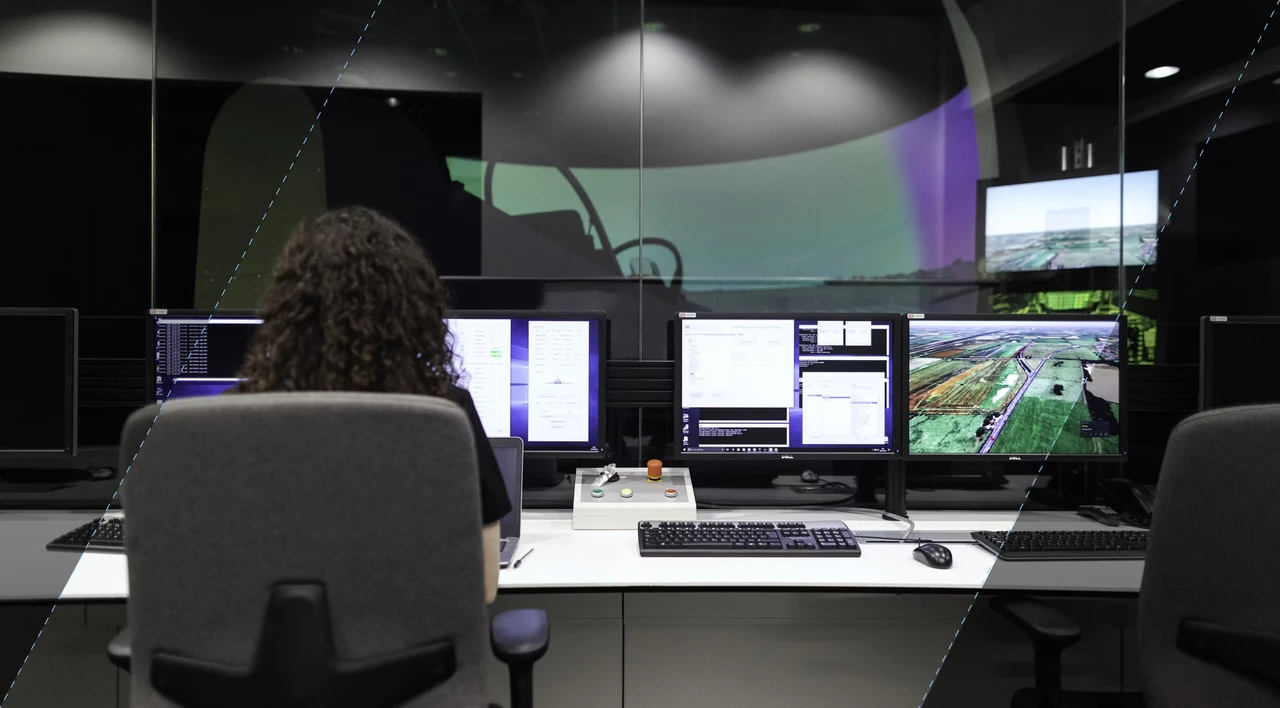SHARE
Record Information System (RIS) for Healthcare Data Management

Contents
Contents
It’s reported that the healthcare industry alone produces 30% of the world’s data, underscoring the need for efficient data management systems.
Radiology Information Systems (RIS) are playing a role in managing this vast amount of data, streamlining workflows, and enhancing patient care.
By integrating with other systems like PACS and VNAs, RIS ensures that radiology departments operate smoothly and effectively.
In this article, we’ll explore the key components, benefits, and future potential of RIS, demonstrating how these systems are transforming healthcare management and improving outcomes for patients.
Key Takeaways:
- A Radiology Information System (RIS) is used in healthcare to manage medical imagery and associated data.
- RIS works with PACS and VNAs to streamline radiology workflows and enhance patient care.
- Key components of RIS include patient management, scheduling, patient tracking, results reporting, image tracking, and billing.
- Integrating RIS with revenue cycle management systems improves efficiency, patient care, data management, and billing processes.
What is A Record Information System (RIS)?
A radiology information system (RIS) is a networked software system used in healthcare for managing medical imagery and associated data.
The global RIS market was valued at approximately U$ 1 Billion at the end of 2021. It works in conjunction with other healthcare software solutions such as picture archiving and communication systems (PACS) and vendor-neutral archives (VNAs) to streamline radiology workflows and enhance patient care.
The RIS provides several key components, including:
- Patient management
- Scheduling
- Patient tracking
- Results reporting
- Image tracking
- Billing
It integrates seamlessly into a healthcare provider’s revenue cycle management system, offering enhanced efficiency, improved patient care, streamlined data management, and optimized billing processes.
Effective healthcare web development plays a critical role in the design and implementation of these systems, ensuring they are user-friendly, secure, and accessible.
Key Components of a Radiology Information System
A radiology information system (RIS) encompasses several essential functions that contribute to the efficient management of patient information within a healthcare facility.
By seamlessly integrating patient management, scheduling, patient tracking, results reporting, image tracking, and billing capabilities, the RIS streamlines radiology workflows and optimizes patient care.
Patient Management
One of the primary functions of a RIS is patient management. This component allows healthcare providers to track and manage a patient’s complete radiology workflow within the radiology department.
From the moment a patient arrives for their appointment to their discharge, the RIS provides a comprehensive view of their journey, ensuring smooth coordination and streamlined care.
Scheduling
The RIS offers advanced scheduling features that cover both inpatient and outpatient appointments. It enables healthcare providers to book and manage radiology appointments efficiently, taking into account various factors such as resource availability, procedure requirements, and patient preferences.
The scheduling function of the RIS ensures optimal utilization of resources and minimizes waiting times for patients.
Patient Tracking
With patient tracking capabilities, the RIS empowers healthcare providers to monitor a patient’s radiology history seamlessly. From the moment a patient is admitted to the radiology department until their discharge, the RIS allows for efficient tracking of appointments, procedures, and outcomes.
This feature ensures accurate record-keeping and facilitates data-driven decision-making for better patient care.
Results Reporting
RIS systems offer robust results reporting functionalities, generating statistical reports for individual patients, groups of patients, or specific procedures. These reports provide valuable insights into the outcomes of radiology exams and aid in quality assurance initiatives.
With accurate and comprehensive results reporting, healthcare providers can evaluate performance, conduct audits, and make data-backed improvements.
Image Tracking
Traditionally used to track individual films and associated data, RIS systems now integrate seamlessly with electronic health records (EHRs) and picture archiving and communication systems (PACS).
This integration allows for the seamless tracking and management of digital images, ensuring that healthcare providers have access to the right images at the right time to support diagnosis and treatment planning.
Billing
Efficient billing processes are a crucial aspect of healthcare revenue cycle management. RIS systems handle billing functions, including financial record-keeping, electronic payments, and automated claims.
By integrating billing processes into broader electronic health record (EHR) systems, RIS ensures accurate and streamlined financial management, reducing administrative burdens and ensuring optimized billing processes.
Benefits of a Radiology Information System
The implementation of a radiology information system (RIS) offers numerous benefits for healthcare facilities. These systems enhance operational efficiency, improve the quality of patient care, and streamline data management. Additionally, RIS systems optimize billing processes, reducing administrative burdens.
Key Benefits of RIS Systems
- Enhanced operational efficiency: Automates scheduling, streamlines workflows, and reduces patient wait times.
- Improved patient care: Quick access to patient history and reports for better-informed decisions.
- Streamlined data management: Centralized storage for patient health information, reducing errors and improving data integrity.
- Optimized billing processes: Integration with billing systems ensures accurate and faster billing.
The benefits of RIS systems are essential in revolutionizing healthcare management, particularly in medical imaging. Notably, 79 percent of young healthcare professionals surveyed said that digital health technologies are an important tool to achieve better patient outcomes. This underscores the critical role of digital health technologies in enhancing patient care.
|
Benefits |
Description |
|
Operational Efficiency |
Automates scheduling, streamlines workflows, and reduces wait times for patients |
|
Patient Care Quality |
Quick access to patient history and reports improves decision-making for better patient care |
|
Streamlined Data Management |
Provides centralized storage for patient health information, reducing errors and improving data integrity |
|
Optimized Billing Processes |
Integrates billing systems for accurate and faster billing while reducing administrative burdens |
The Future of Radiology Information Systems
The future of radiology information systems (RIS) is closely tied to technological advancements and broader digital transformation in healthcare.
AI in the healthcare market is set to reach $188 billion by 2023. AI integration in RIS offers predictive analytics for early disease detection and personalized treatment planning. Cloud-based RIS systems provide scalability, flexibility, and remote access to critical information, enhancing patient care and outcomes.
As RIS technology evolves, it advances medical imaging and contributes to a more efficient, patient-centered healthcare system. AI technology and cloud-based systems are set to drive automation, improve diagnostic accuracy, and boost overall efficiency in healthcare.
For cutting-edge healthcare web development services, consider Flatirons. Our expertise can help you stay ahead with advanced, reliable, and user-friendly RIS solutions.
Frequently Asked Questions
What is a radiology information system (RIS)?
A radiology information system (RIS) is a networked software system used in healthcare for managing medical imagery and associated data to streamline radiology workflows and enhance patient care.
What are the key components of a radiology information system?
Key components of a radiology information system include patient management, scheduling, patient tracking, results reporting, image tracking, and billing. These components work together to efficiently manage patient data, appointments, results, and financial processes within the radiology department.
What benefits does a radiology information system offer?
A radiology information system enhances operational efficiency by automating scheduling, streamlining workflows, and reducing patient wait times. It improves the quality of patient care by providing quick access to patient history and reports, and it facilitates streamlined data management by centralizing storage for patient health information.
What does the future hold for radiology information systems?
With the integration of artificial intelligence (AI) and cloud computing, RIS systems are expected to automate processes, enhance diagnostic accuracy, and improve efficiency.
AI in RIS holds the potential for breakthroughs in predictive analytics, aiding in early disease detection and treatment planning. Cloud-based RIS systems offer greater scalability, flexibility, and accessibility, enabling remote and secure access to critical information.
Expert Healthcare Software Development Services
Flatirons Development provides top-rated healthcare software development services.
Get the CEO's Take
Handpicked tech insights and trends from our CEO.
Expert Healthcare Software Development Services
Flatirons Development provides top-rated healthcare software development services.
Get the CEO's Take
Handpicked tech insights and trends from our CEO.

Secure Mobile App Development: Prioritizing Data Protection
Flatirons Development
Oct 22, 2025
What is Data Ingestion? Definition, Types, and Best Practices for Efficient Data Processing
Flatirons Development
Oct 16, 2025
Enterprise Computing: Transforming Business Operations
Flatirons Development
Oct 09, 2025
Explore the Top Embedded Systems Examples of Today
Flatirons Development
Oct 04, 2025
Best Manual Testing Tools to Boost Your Software Quality
Flatirons Development
Sep 28, 2025
Digital Product Development: Enhance Your Business Offerings
Flatirons Development
Sep 12, 2025
Secure Mobile App Development: Prioritizing Data Protection
Flatirons Development
Oct 22, 2025
What is Data Ingestion? Definition, Types, and Best Practices for Efficient Data Processing
Flatirons Development
Oct 16, 2025
Enterprise Computing: Transforming Business Operations
Flatirons Development
Oct 09, 2025
Secure Mobile App Development: Prioritizing Data Protection
Flatirons Development
Oct 22, 2025
What is Data Ingestion? Definition, Types, and Best Practices for Efficient Data Processing
Flatirons Development
Oct 16, 2025
Enterprise Computing: Transforming Business Operations
Flatirons Development
Oct 09, 2025
Secure Mobile App Development: Prioritizing Data Protection
Flatirons Development
Oct 22, 2025
What is Data Ingestion? Definition, Types, and Best Practices for Efficient Data Processing
Flatirons Development
Oct 16, 2025
Enterprise Computing: Transforming Business Operations
Flatirons Development
Oct 09, 2025